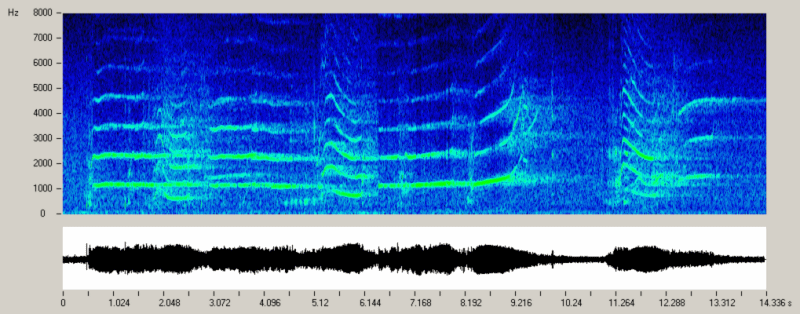Università degli Studi di Pavia
Centro Interdisciplinare di Bioacustica e Ricerche Ambientali
Via Taramelli 24 - 27100 Pavia - Italye-mail : cibra@unipv.it
The voices of marine mammals of the Mediterranean Sea
Species occasionally entering in the Mediterranean Sea
Orcinus orca
Killer whales have been extensively studied for their
acoustic and social behaviour in particular on the pacific
coast of Canada, where resident groups have been observed
for many years. These animals are very vocal: they produce
echolocation clicks and frequency modulated whistles
rarely exceeding 5 kHz; frequently, whistles begin with
short sequences of clicks with dominant energy at low
frequency.
Individuals may have whistles with well recognizable
shapes that can be used by researchers for individual
recognition. On the Pacific coast of Canada killer whales
live in stable groups, denominated pods, that regularly
patrol the coast and the channels among the various
islands; individuals in the pods can be recognized with
the photo-identification of the dorsal fin and also with
the whistles emitted by individual components. With
hydrophones located in key points along the coast, the
researchers can control the movements of the various pods.
It is interesting to notice that the killer whales living
offshore, that can be isolated animals or small and
dynamic groups, have a very different acoustic behaviour.
They are normally silent to do raids close to the coast to
find preys. This is one of the few examples on highly
diversified acoustic behaviors in the same species. There
are no recordings of killer whales occasionally entered in
the Mediterranean Sea.

Killer whale sounds are mostly modulated tonals but they
also emit echolocation pulses.
Pseudorca crassidens
The false killer whale has been relatively well-studied in
terms of its echolocation characteristics and
capabilities, largely due to studies from captive animals.
As yet, no data from recordings of wild animals have been
reported. Although this species produces whistles too,
these vocalisations have not been studied in depth. The
whistles are usually between 3 and 11 kHz and may last up
to 1 sec.
Megaptera novaeangliae
The humpback whale is probably the most known species
because of its “songs” composed by notes organized in
sentences and in themes that are structured with
characteristic, constant and repeated rhythms. It has been
shown that different populations have different songs,
though songs are subject to progressive changes during the
years. Also, when groups with different songs come into
contact, they can influence each other and new songs can
be elaborated by incorporating new notes or new strophes.
The notes that compose the songs are mostly modulated
tones, but there are also non tonal sounds with extremely
varied features that seem puffs, rolls of drums, gurgles,
meows, etc.
Balaenoptera acutorostrata
Like in most Balaenopteridae the acoustic repertoire of
the Minke whale is relatively limited and simple; the most
common vocalization is made by fast series of low
frequency pulses with most energy below 500 Hz. The
documented repertoire also includes a variety of sounds
similar to grumbling and to modulated tones.
There are no recordings made in the Mediterranean Sea.
Created June 2005, updated August 2005
